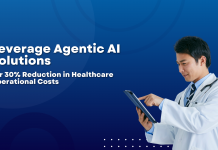In light of recent healthcare reform initiatives and scientific discoveries, even a six-month vision into the crystal ball is a little murky, let alone a 10- to 20-year view of how the practice of medicine will evolve. So it’s natural to get curious about what the future holds for healthcare technology.
Is a hologram of you going to be sent to people’s houses after a high-tech full body scan, and an iPad will be in the hands of every practitioner?
It’s not likely, but the ever-increasing demands placed on the healthcare system and the accompanying rise in associated expenditures will eventually necessitate a change in the traditional job of the modern doctor. The practice of the future is likely to reimagine the care-delivery model, reevaluate compensation, and retool technology, beyond simply universal EHR adoption or smartphone use.
Healthcare professionals who want to remain relevant in the coming years will need to embrace developing healthcare technologies and work in tandem with them.
We can see the growing pressure on heal.
What would be the changes in future medical systems?
Despite the enthusiasm, the digital revolution in healthcare will fundamentally alter not only the care we receive but also the experience of receiving it. In the not-so-distant future, remote medical assistance will be not just commonplace but essential. It may include:
1. Collaboration on Data
Providers’ unwillingness to share patient information is a major issue in today’s healthcare system. Without routine data and information sharing between providers, patients face unnecessary difficulties, frustrations, delays, and even injury. As a result, health care systems may experience difficulties. One of the most significant developments in the next decade will be the safe, HIPAA-compliant transfer of patient data and information between different medical facilities.
Healthcare costs balloon for no reason when doctors and hospitals withhold information about their patients. This is because doctors often order unnecessary tests because they don’t have access to their patient’s complete medical records. Patients may be put in harm’s way if doctors aren’t given all the information they need to treat them properly.
One of the biggest issues with the modern healthcare system is that only the well-insured have access to high-quality care.
Using cutting-edge technology to boost data sharing is essential to boosting patient and health system access to services and bettering the industry as a whole.
2. Rapid medical technology development
With telemedicine, the foundations are laid for a future in which healthcare and technology are interwoven. At times, patients will need care that goes beyond what can be provided by a general practitioner or the county hospital. Providers in this category will require the assistance of professionals from elsewhere. Virtual technologies will be essential to the success of many forms of treatment, including nanobots outfitted with wireless transmitters and diagnostic smart toilets proposed by physicist Michio Kaku.
Many of our current procedures may one day be seen as obsolete and even harmful, much like how we now cringe at the thought of treating epilepsy with leeches or administering heroin to youngsters for sore throats.
More than just improving upon existing therapies, the new wave of medical advancements will eliminate the necessity for in-person consultations and lengthy wait times. A six-month turnaround time to create a vaccine against a global pandemic, or a four-hour wait time to see a doctor in an emergency, may soon appear antiquated.
3. A Trip to the Doctor’s Office
Instead of describing your symptoms to doctors, patients will soon be able to merely go into a scanner, similar to those used at airports, or even just breathe into a device. The ability of the technology to detect disease will free up the doctor’s time to devote to more pressing matters.
In order to generate a comprehensive report on your current health, the scanner will use information about your lifestyle and nutrition in addition to information from the thorough checkup. This will be especially helpful in tracking long-term conditions like diabetes and dementia.
4. Artificial intelligence and quantum computers
Many advances in artificial intelligence and quantum computing are showing great promise in the medical field. Artificial intelligence aids doctors in making quicker, more accurate diagnoses with less patient input and less intrusive treatments. For instance, a breast cancer diagnosis algorithm was developed in part by Google’s artificial intelligence division.
During the COVID-19 epidemic, AI was widely employed for screens, contact tracing, and risk assessment.
AI has also been utilized by healthcare providers to aid with viral identification, medicine repurposing, and inventory management.
It is expected that quantum computers will be able to process data more precisely and quickly than current supercomputers. By doing so, healthcare personnel can accomplish a variety of tasks more quickly, including drug discovery and hospital logistical calculations, virtual clinical trials, and genetic sequencing. Doctors could benefit from analyzing petabytes of historical data with the help of clinical-decision support systems powered by quantum computing in the future.
5. The medical lifecycle needs to be transparent
Through the development and widespread use of new technologies, patients will have greater insight into their care at every stage. Problems and confusion have been building up for a long time due to the absence of information about certain services and their associated prices. Patients often have a hazy understanding of their medical care in terms of what procedures are being performed, where they are being performed, when they are being performed, and how much they will cost.
Technology can assist close this information gap by making it possible for patients to gain instantaneous access to their medical records online. Patients now have safer and more convenient access to their health records than ever before thanks to two landmark rules issued by the U.S. Department of Health and Human Services less than two years ago.
In addition, it is crucial that this data be given to patients in a way that is understandable by all demographics, including the undereducated, the uninsured, and the elderly. In order to enable more people to have access to high-quality healthcare, it is essential that the medical system be more open and transparent.
Conclusion
Digital healthcare technologies like AI, VR/AR, 3D printing, robots, and nanotechnology are altering the future of healthcare technology right before our eyes. To ensure that technology does not dominate us, rather than the other way around, we must become well-versed on the most recent advancements in the field.






